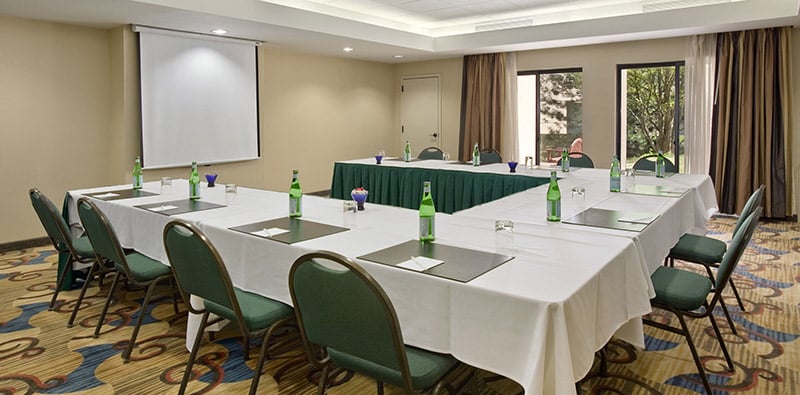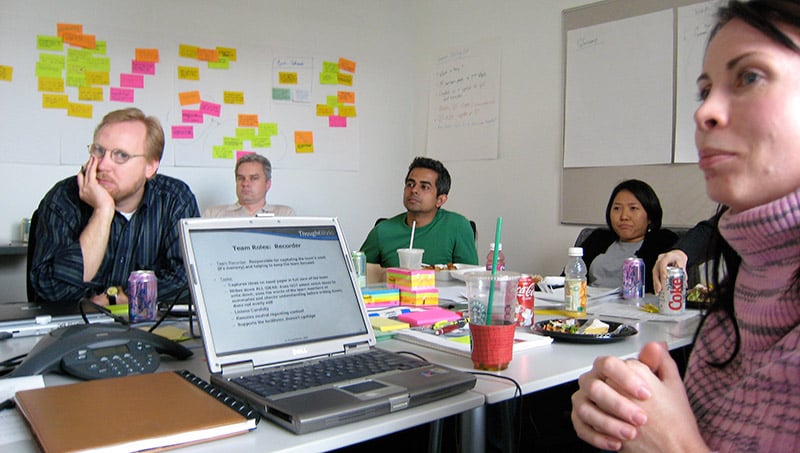5 Tips to Lead and Facilitate a Meeting Simultaneously

There are four distinct roles within a collaborative meeting: Leader, Facilitator, Note-Taker, and Participant. So what happens if you have to be Leader and Facilitator at the same time? Here are tips to make the best of this sticky situation.
1. Have Someone Else Capture Notes

As we discussed in our “Who Does What” post, you need a separate Note-Taker. If you’re taking on both the Leader and the Facilitator role in a meeting, make sure you assign someone else to take all the notes. Two jobs is hard enough; three is deadly.
2. Simplify the Meeting

These tips are useful for any meeting, but are crucial if you have a single person who must facilitate a meeting while leading it. Here are two key tips for leading a productive, focused meeting:
- Simplify the agenda. If you have lots to cover, remove the smaller stuff and consider breaking the meeting up into multiple sessions.
- Remove nonessential people from the invitation list. The more cooks in the kitchen, the more you have to keep track of as Leader/Facilitator. Remove anyone who does not need to be there and send them notes later.
3. Over-Prepare

Facilitating a meeting is a special skill. If you haven’t had facilitation training, it will feel unfamiliar at first. Your best bet is to do extra preparation beforehand in order to make the facilitation exercises go smoothly. Specifically, this means:
- Prepare great questions for each discussion topic in advance. Write and rehearse these questions. Don’t wing it — write it down! It is completely okay to read from a script.
- Prepare a strategy for your activities. If you’re doing an ice-breaker, have that ready and written into the agenda. If you’re brainstorming, have your tools ready to go. In general, make sure your activities (and any tools required to do them) are all lined up and ready to go…and choose your activities wisely, so you’re not doing too many.
For more on developing good questions, check out this talk by Michael Wilkinson:
4. Check Your Bias
As the meeting’s Leader, you’re fundamentally biased — you’ve got an agenda (pun sadly intended) and you need the meeting to reach real conclusions. As the Leader, you likely have a strong opinion about what those conclusions should be! Facilitators should avoid bias in order to achieve the best solutions that reflect the opinions of the group. The trick is knowing when your “Leader bias” matters and when it doesn’t.
If your meeting is a daily standup, a weekly team check-in, or a similar kind of non-controversial status meeting, your bias probably doesn’t matter much. If your team is pretty well aligned, don’t worry about it — plan to keep the meeting short, make your decisions, and go for it.
But let’s say you’re deciding a major strategy that affects the coming year of work. Or you’ve got an angry client and you’re trying to save the account. Or you know your team is split into opposing camps about a major decision. In these cases, your Leader bias prevents you from being an effective Facilitator. When the stakes are high, trying to fill both roles is truly risky. If you face this situation, find somebody else to Facilitate or be prepared to risk a bad outcome for the meeting.
5. Get Facilitation Training

Facilitation is a fundamental leadership skill. Just like public speaking and writing, facilitation is a skill you can learn. Get facilitation training to understand what a well-facilitated meeting should look like, and bring that valuable skill to your group.
6. BONUS: Examine Why You’re in This Situation
Most of time, a single person filling both Leader and Facilitator roles means one of two things: either you’re part of a tiny team (so there aren’t enough people to fill all the roles individually); or you’re part of an organization that doesn’t know that facilitation is a separate, important role. If you’re in the latter situation, bring an understanding of meeting roles to your organization before you do any of the above.
Photos: heron flight study by Harald Hoyer; note-taking by Marco Arment; meeting room by Massachusetts Office of Travel & Tourism; parachutes by U.S. Army; facilitation training by Josh Evnin.


